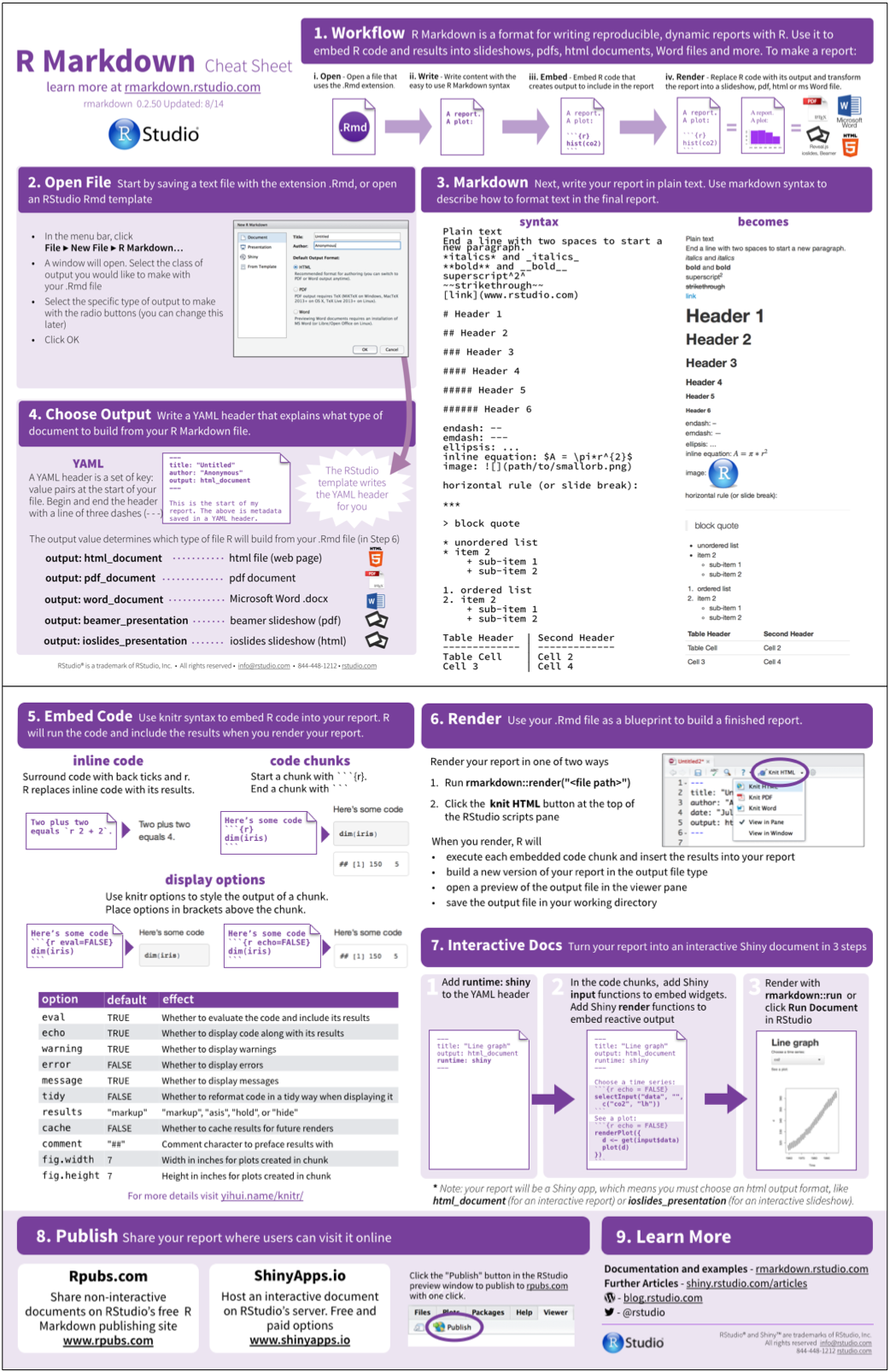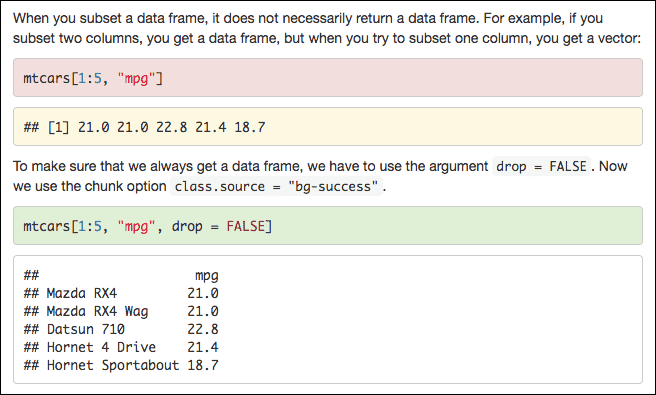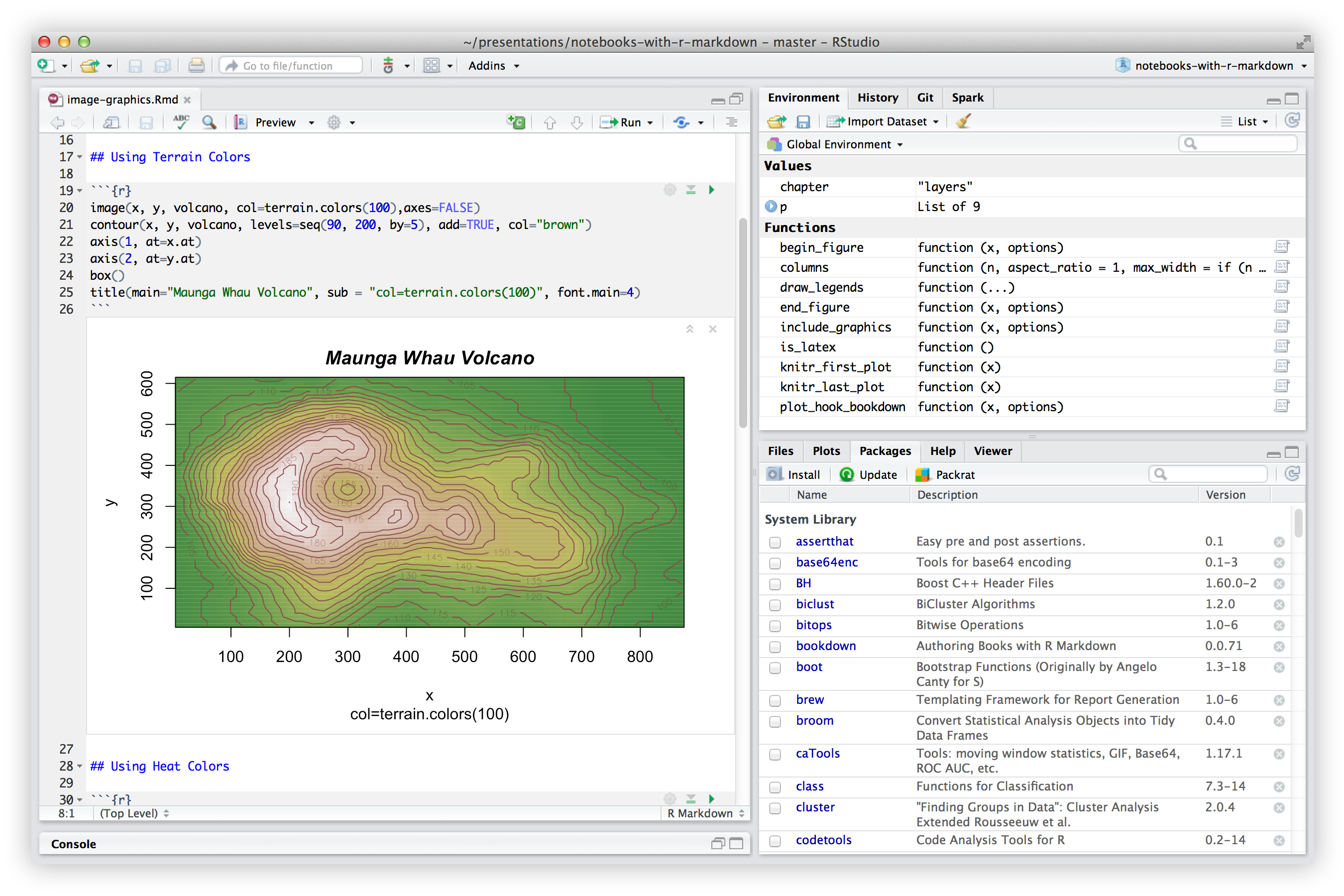Python from RMarkdown – Matplotlib problems Tags: matplotlib, python, r, reticulate. I’m trying to use reticulate to run some simple Python code in an RMarkdown document. I’ve found that if Matplotlib is in the conda environment, I get errors when trying to run a python code chunk, but I can run Python from R directly. Here’s a simple.
- In short: RMarkdown allows you to create documents that are compiled with code, producing your next scientific paper. 2 2 Note: this is also possible for Python and other open-source data analysis languages, but we focus on R. Now we’re together trying to help spread the word, because it can make writing manuscripts so much easier!
- Python code chunks work exactly like R code chunks: Python code is executed and any print or graphical (matplotlib) output is included within the document. Python chunks all execute within a single Python session so have access to all objects created in previous chunks. Chunk options like echo, include, etc. All work as expected.
This is a Python implementation of John Gruber’sMarkdown.It is almost completely compliant with the reference implementation,though there are a few very minor differences. See John’sSyntax Documentationfor the syntax rules.
To get started, see the installation instructions, the libraryreference, and the command line interface.
Goals¶

The Python-Markdown project is developed with the following goals in mind:
Maintain a Python library (with an optional CLI wrapper) suited to use in web server environments (never raise an exception, never write to stdout, etc.) as an implementation of the markdown parser that follows the syntax rules and the behavior of the original (markdown.pl) implementation as reasonably as possible (see differences for a few exceptions).
Provide an Extension API which makes it possible to change and/or extend the behavior of the parser.
Features¶
Python Markdown Parser
In addition to the basic markdown syntax, Python-Markdown supports the followingfeatures:

International Input
Python-Markdown will accept input in any languagesupported by Unicode including bi-directional text. In fact the test suiteincludes documents written in Russian and Arabic.
Extensions
Various extensions are provided (includingextra) to change and/or extend the base syntax.Additionally, a public Extension API is availableto write your own extensions.
Output Formats
Python-Markdown can output documents with either HTML or XHTML style tags.See the Library Reference for details.
Command Line Interface
In addition to being a Python Library, acommand line script is available for your convenience.
Differences¶
While Python-Markdown strives to fully implement markdown as described in thesyntax rules, the rulescan be interpreted in different ways and different implementationsoccasionally vary in their behavior (see theBabelmark FAQfor some examples). Known and intentional differences found in Python-Markdownare summarized below:
Middle-Word Emphasis
Python-Markdown defaults to ignoring middle-word emphasis (and strongemphasis). In other words,
some_long_filename.txtwill not becomesome<em>long</em>filename.txt. This can be switched off if desired. Seethe Legacy EM Extension for details.Indentation/Tab Length
The syntax rulesclearly state that when a list item consists of multiple paragraphs, “eachsubsequent paragraph in a list item must be indented by either 4 spacesor one tab” (emphasis added). However, many implementations do not enforcethis rule and allow less than 4 spaces of indentation. The implementers ofPython-Markdown consider it a bug to not enforce this rule.
This applies to any block level elements nested in a list, includingparagraphs, sub-lists, blockquotes, code blocks, etc. They must alwaysbe indented by at least four spaces (or one tab) for each level of nesting.
In the event that one would prefer different behavior,tab_length can be set to whatever length isdesired. Be warned however, as this will affect indentation for all aspectsof the syntax (including root level code blocks). Alternatively, a third party extension may offer a solution that meets your needs.
Consecutive Lists
While the syntax rules are not clear on this, many implementations (includingthe original) do not end one list and start a second list when the list marker(asterisks, pluses, hyphens, and numbers) changes. For consistency,Python-Markdown maintains the same behavior with no plans to change in theforeseeable future. That said, the Sane List Extensionis available to provide a less surprising behavior.
Support¶
You may report bugs, ask for help, and discuss various other issues on the bug tracker.


Do you love working with Python, but just can’t get enough of ggplot, R Markdown or any other tidyverse packages. You are not alone, many love both R and Python and use them all the time. Now RStudio, has made reticulate package that offers awesome set of tools for interoperability between Python and R.
One of the biggest highlights is now you can call Python from R Markdown and mix with other R code chunks. And yes you can load the data with Pandas in Python and use the pandas dataframe with ggplot to make cool plots.
Not just that, now you can source your python scripts, just like you have been sourcing your R scripts.
Python In Markdown Cell
Reticulate has made it easy to translation between R and Python objects. For example, it is much easier to go from R dataframes to Pandas data frames, or R matrices to NumPy arrays).
Python Markdown Example
One of the advantages of Python is the virtual environments, where you can different versions of Python and its packages separately. All you need to do is create a specific virtual environment for each version you want and use it virtual environment when you need. Reticulate allows you use specific virtual environment that you like.
Learn more about reticulate package from
Here are some cool examples of getting started with reticulate to use R and Python from R Markdown
using #Python and #rstats in the same RMarkdown document is pretty awesome with the Reticulate Package. Objects from Python are accessible in R using the magic `py` object. Pretty amazing, imo. pic.twitter.com/iQPqWuJ4RN
— JD Long (@CMastication) March 28, 2018
Related posts:
